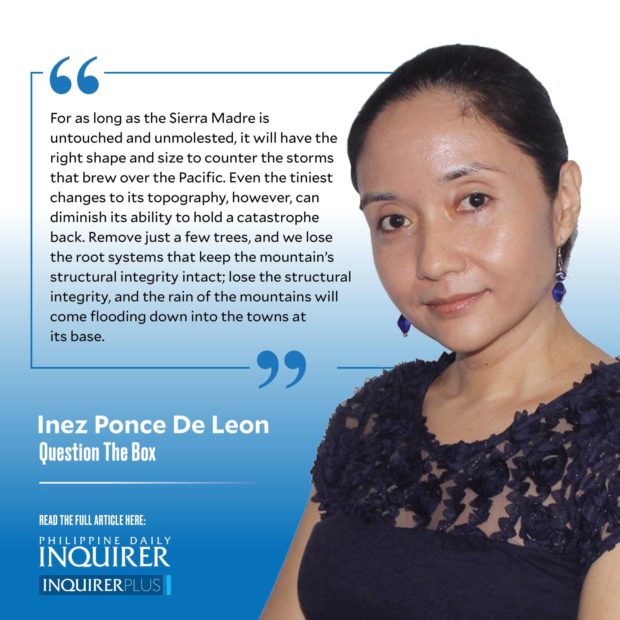The mother of all mountains
Millions of years ago, when giants roamed the world, there was a family: Lusong, a great warrior; Sierra, a loving mother; and their two sons, Iloco and Tagalo. They lived by the sea, where they pulled up fish from the waters, hunted in the nearby woods, and settled on the rocky shore.
Their only problem was Bugsong Hangin, the King of the Easterlies. He had once courted Sierra, but when she chose the mighty Lusong as her groom, the ruler of the winds always came to show his wrath.
Article continues after this advertisementHe would rip trees from their roots, raise the rage of the seas, pour down torrents of rain. He would not stop, for he loved the beautiful Sierra—but because she did not love him, he then vowed to bring the greatest force of his army to destroy everything that she held dear.
One day, the attacks finally killed Lusong. Before he perished, however, Lusong made Sierra promise that she would always protect their sons.
Sierra made a final sacrifice that would stand eternal against the madness. She laid herself down upon the coastline, her back forever to the winds, her arms cradling her boys.
Article continues after this advertisementBugsong Hangin would bring storms and destruction, but the loving mother would always keep him out. Upon her body grew forests, and in those lush wilds were beasts and birds like no other. Bugsong Hangin would always retreat to the ocean, to rethink his strategies, reassemble his troops, sharpen his weapons—but always, his army would break apart when it met the crests and valleys and curves of the Sierra Madre.
The myth of a jealous god and a protective mother has been around for ages, and it gives insight into how we, as a people, see the mother of all Philippine mountain ranges. The Sierra Madre stretches 500 kilometers from Cagayan down to Quezon, covering over a million hectares of land, cradling peaks sometimes close to two kilometers high. While the mountains look thick with greenery, they are shadows of their old selves: Since the Spanish occupation, the Sierra Madre has lost as much as 90 percent of its original forest cover to quarrying, illegal logging, and exploitative development.
Like its namesake from myth, the Sierra Madre protects much of Luzon from typhoons. Over the Pacific Ocean—Bugsong Hangin’s domain—open water feeds rapidly rotating storms, allowing them to pack energy. By the time a storm’s edge hits the uneven peaks of the Sierra Madre, the serrated mountains cut like a saw through a spiral, diminishing the storm’s power.
For as long as the Sierra Madre is untouched and unmolested, it will have the right shape and size to counter the storms that brew over the Pacific. Even the tiniest changes to its topography, however, can diminish its ability to hold a catastrophe back. Remove just a few trees, and we lose the root systems that keep the mountain’s structural integrity intact; lose the structural integrity, and the rain of the mountains will come flooding down into the towns at its base.
There is little regard for protecting the Sierra Madre, it seems, at higher levels of government. Kaliwa Dam, touted as the solution to Luzon’s water and flooding problems, is, ironically, about to contribute more to flooding if it is indeed built. Dams have historically been created to control floods, but the act of constructing them worsens flooding: Indigenous peoples are displaced, large areas of forests are wiped out, and roads, bridges, and canals are built to transport goods and people.
The dam is a temporary solution meant to destroy a long-term barrier. It is like cutting out a door in a protective wall to get a bit of fresh air, at the cost of allowing invaders to come through.
Planting trees will not be enough. Today’s saplings won’t be able to hold up the mountains for a few decades yet. Flood barriers? Useless when the Sierra Madre fails to keep out storms.
As I write this, I can hear the last of the NDRRMC’s alerts. After days of a clanging, blaring Signal No. 4, Sierra has once again sliced up “Karding” the way she dismantled “Ompong,” “Lawin,” “Milenyo,” and many other typhoons that would have been deadly without her protection.
Maybe we will finally recognize that this backbone of Luzon needs us to have a backbone as well, to act in its defense—and especially when our leaders barely understand the true gravity of their duties.
iponcedeleon@ateneo.edu

















